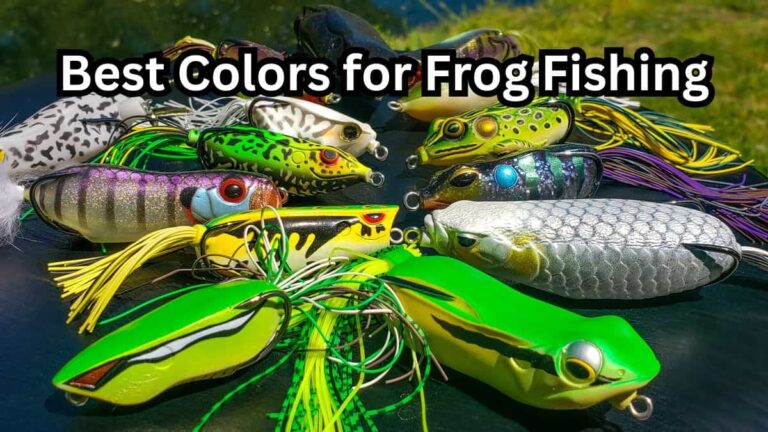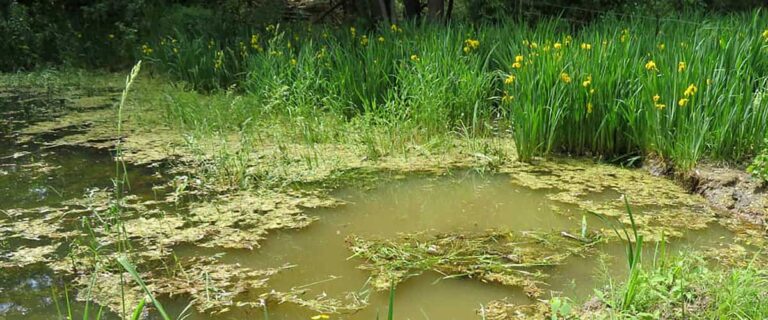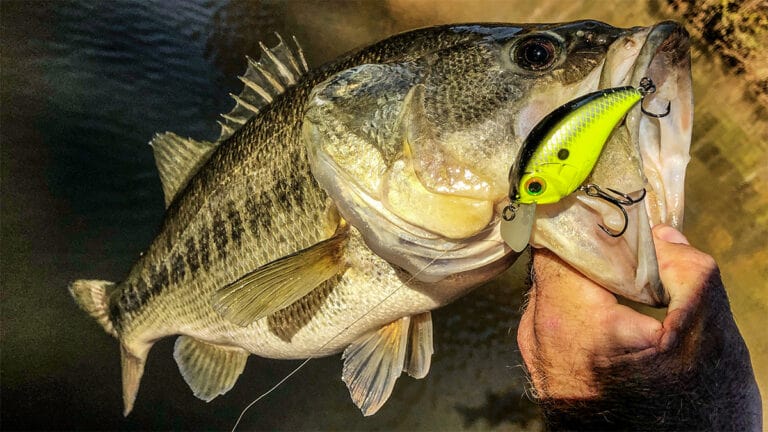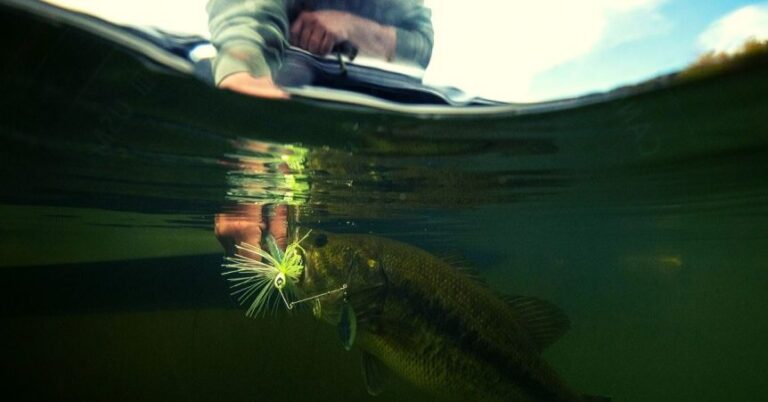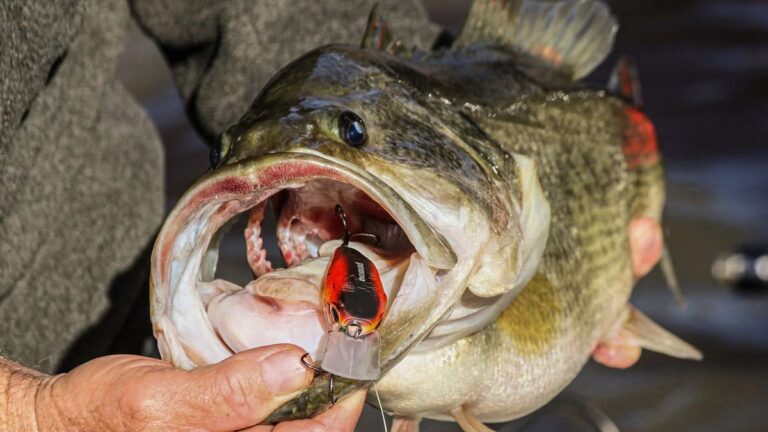Bass Fishing with Bluegill Swimbaits
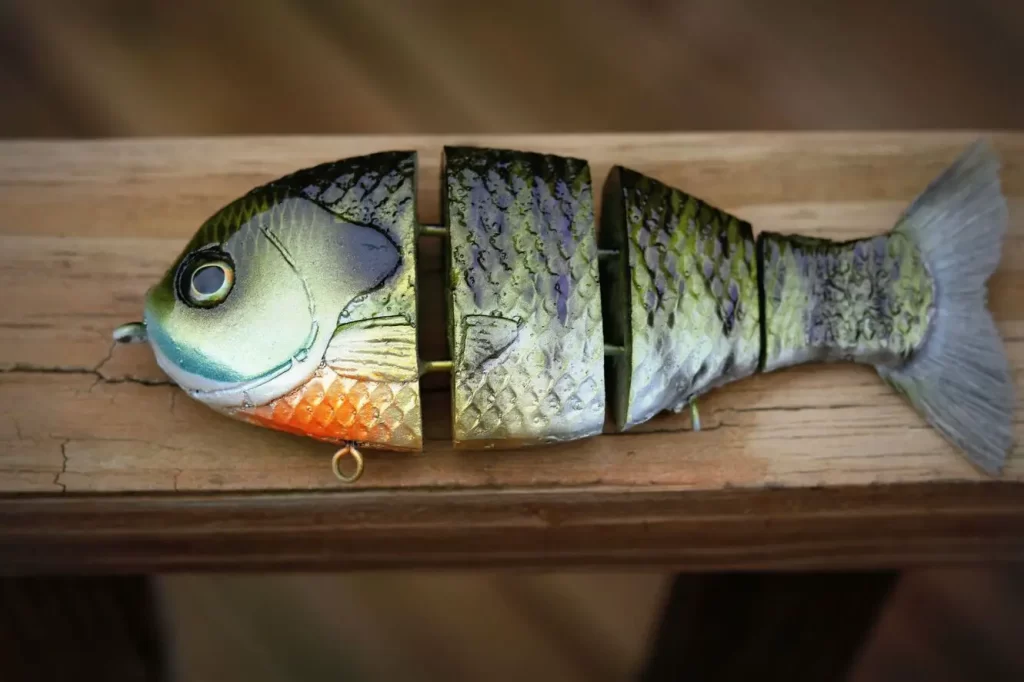
Everyone knows that bass love eating bluegill. If there is a body of water with bass in it, rest assured that they will be feeding on bluegill.
Swimbaits are well known for their ability to catch BIG bass.
The big bass potential paired with the profile of bass’s favorite meal makes bluegill swimbaits a lunker catching machine.
But you need to know how, when, where, and which lures to use to have real success.
Do Bluegill Swimbaits Work?
Yes, bluegill swimbaits work extremely well to catch big bass. Because bass love eating bluegill, any lure that closely mimics a bluegill will catch tons of bass.
One negative of bluegill swimbaits that you will find is that the large, wide body shape of the lure can make it hard for bass to eat it.
But as long as you use high quality swimbaits (which we will discuss), then you don’t have to worry about this.
So yes, bluegill swimbaits are a great lure to catch bass.
Types of Bluegill Swimbaits
1. Jointed Bluegill Swimbait
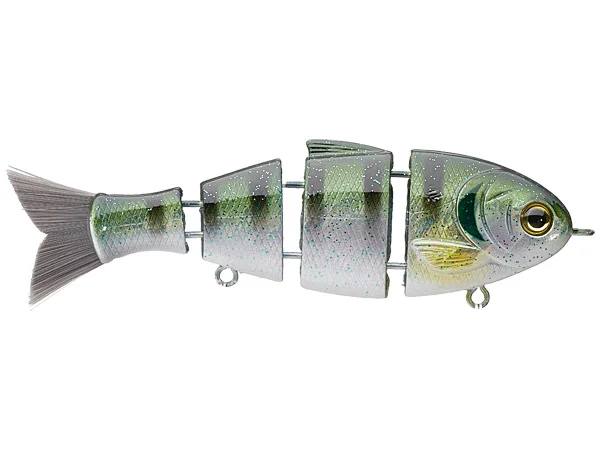
The hard-body, jointed style of swimbaits are most likely the most popular. These lures have the most attractive and realistic action amongst the three styles.
Since they are hard-body lures, they will also last a lifetime unless you get them snagged break them off.
The biggest drawback of these swimbaits is that they often come with a high price tag.
You can certainly find quality jointed lures under $20, but most of them will range from $25-$100.
Jointed swimbaits will be sinking style lures where your retrieve speed determines the depth they are fished.
2. Soft Plastic Bluegill Swimbaits

Soft plastic swimbaits will typically be single-hook, paddle tail swimbaits.
Not to be mistaken with finesse swimbaits, these are big baits that are hyper realistic.
Many of these lures will have the exact profile and feel of a bluegill, even down the the scales.
The paddle tail style of action is not as visually realistic, but creates a more subtle, thumping vibration in the water.
This provides a more enticing vibration that gets tons of big bass to bite.
Because of the single-hook characteristic, bass will need to be able to fit the entire bait in their mouth to get hooked.
So the only bass you are going to catch will be big.
Berkeley Gilly
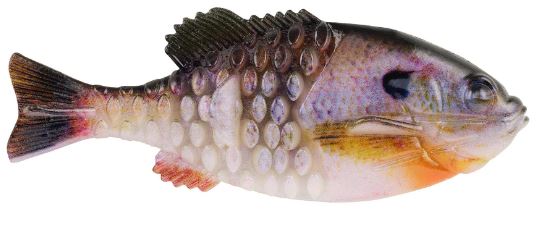
The Berkeley Powerbait Gilly is a unique soft plastic bluegill swimbait.
This bait now pre-rigged, and can be fished any way you like.
It is much smaller, and more versatile than the standard soft swimbaits.
I actually prefer the Gilly in most situation.
3. Bluegill Glide Baits
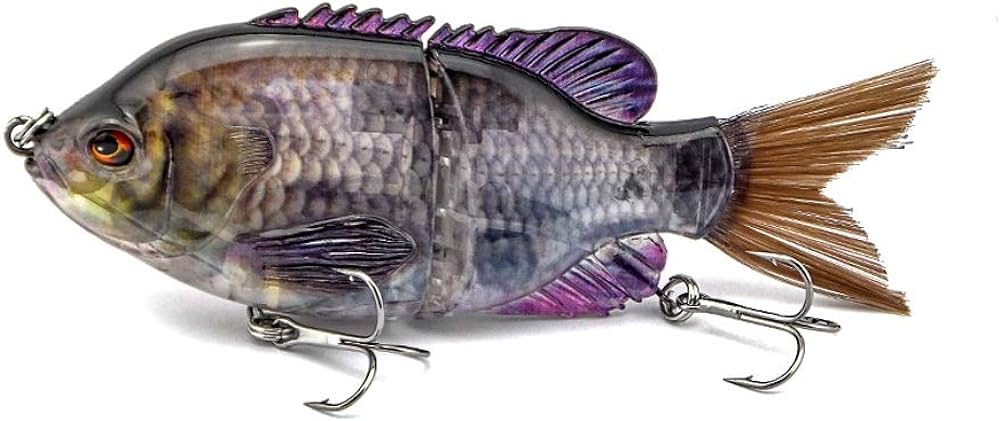
Glide baits are actually a category of their own, separate from swimbaits.
But because of the clear similarities, I threw them into this list.
Glide baits are very slow sinking or suspending lures that are twitched or dragged through the water.
They aren’t reeled or swimmed like a swimbait, but rather glide through the water from side to side.
Glide baits are a sure fire way to catch some monster bass.
How to Retrieve and Work Them
Retrieving bluegill swimbaits will be essentially the same as other swimbaits.
One thing to be cautious of while fishing the jointed styles, is to keep them off the bottom.
In the shallow water, it can be easy to get the treble hooks stuck on a log or weeds that are on the bottom.
Other than that, it is pretty simple to work these baits. A straight reel with a jerk, pause, or other sporadic motion every 3-4 seconds is tough to beat.
This allows the lure to show off it’s realistic and enticing action, while also adding unpredictable action to draw reaction strikes or catch trailing bass.
When to Use Them?
The best time of year to throw a bluegill swimbait is going to be from post-spawn to the end of summer.
While bass are spawning, they don’t really eat at all. So after bass have spawned, they need to eat a bunch of food to bulk back up.
And the number one forage that is hanging out in the same shallow water as these bass, is bluegill.
Post-spawn bass really hone in on bluegill. Once the bass have fed up on bluegill in the shallows, they will spread out and begin to eat a wider variety of foods.
However, bass still keep bluegill as their primary forage throughout the entire summer.
Summer bluegill are up shallow and very easy to ambush. Bluegill also spawn during the summer time, making them a super easy target.
Where to Use Them?
As you probably surmised from the previous section, shallow water is going to be the best place to fish bluegill swimbaits.
Since bluegill spend most of their time in shallow water, that is where bass will be looking and hunting for them.
But more specifically, grass and wood are go-to places to fish these swimbaits.
Bluegill hang around grass and wood for safety and to feed on small insects and minnows.
This cover also provides bass with ambush opportunities.
Unless you are using a Gilly style bluegill swimbait, it will be tough to fish these lures close to the cover since they are certainly not weedless baits.
Gear Setup
These baits are big. You are going to need a bit bigger gear to effectively fish them. Ideally, a 7′-7’6″, heavy power baitcasting rod.
A faster gear ratio, above 7.0.1, works best, but is not as necessary as the rod and line.
Speaking of line, I never go below 17 lb line, and this line will almost always be fluorocarbon.
The fluorocarbon helps to further the realism of the presentation because of it’s invisibility, but offers a bit of stretch to allow for proper hook sets when using treble hooks.
Best Bluegill Swimbaits
- Catch Co. Baby Bull Bluegill
- 6th Sense Trace 4K Bluegill
- Megabass Vatalion
- Bass Pro XPS Bluegill
- Savage Gear Pulse Tail
- Smash Tech Little Weedless Bluegill
- Berkeley Powerbait Gilly
Read our full breakdown of these bluegill swimbaits.
Tying this Off
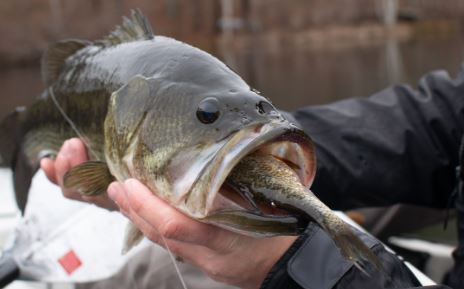
Time and time again, anglers catch double digit bass on bluegill swimbaits.
Now that you know the majority of bass fishing with bluegill swimbaits, it is time to let experience be your teacher.
Tie one of these lures on, and fish it.
Not only will it be effective, but watching your hyper realistic bluegill swim through the water will incredibly fun to fish with.
Good luck!


